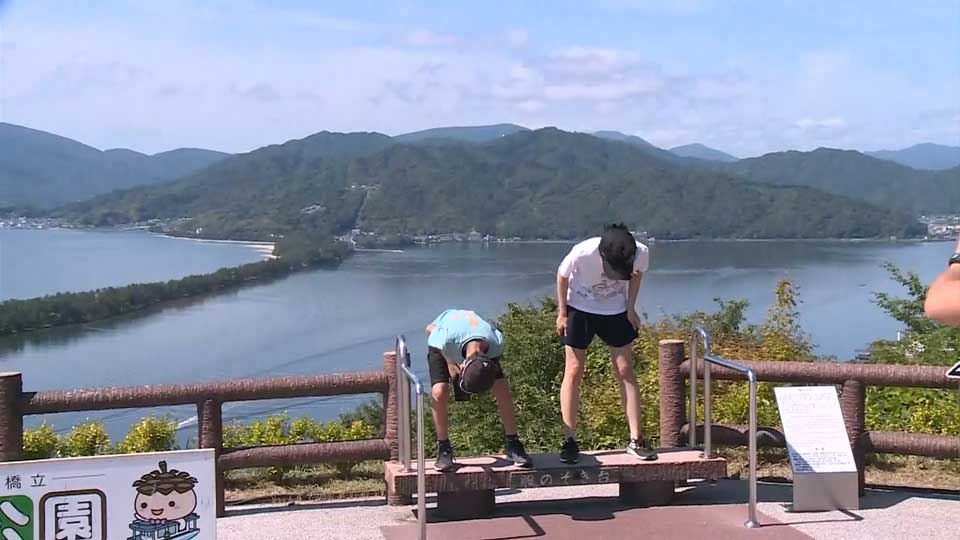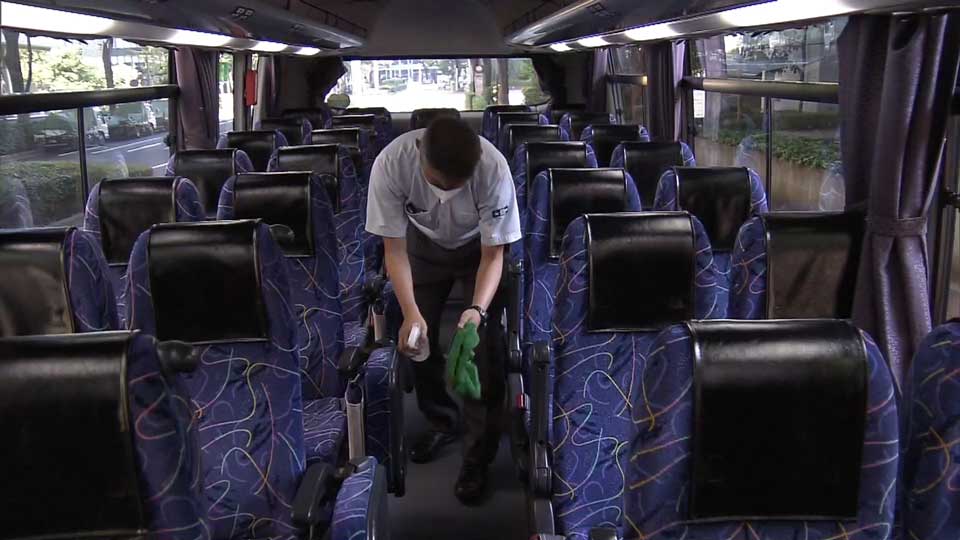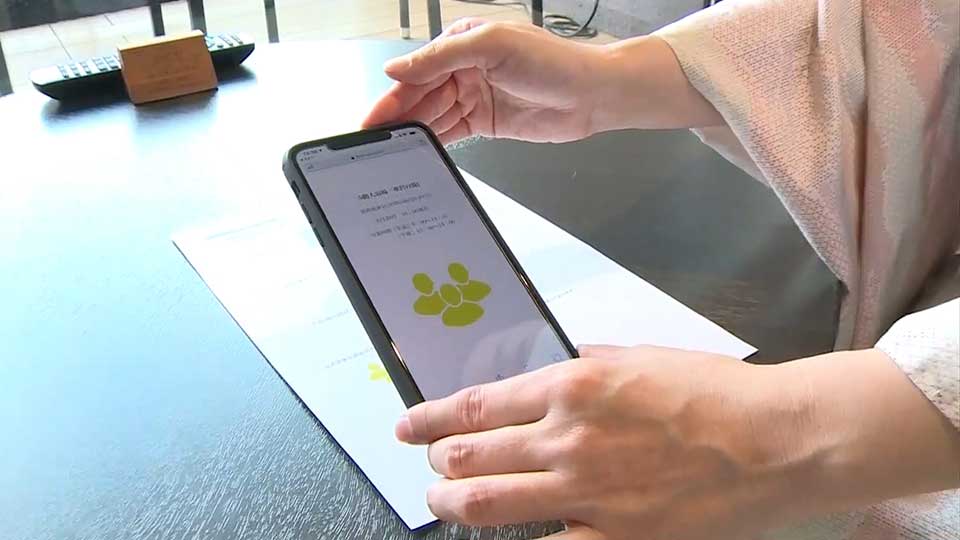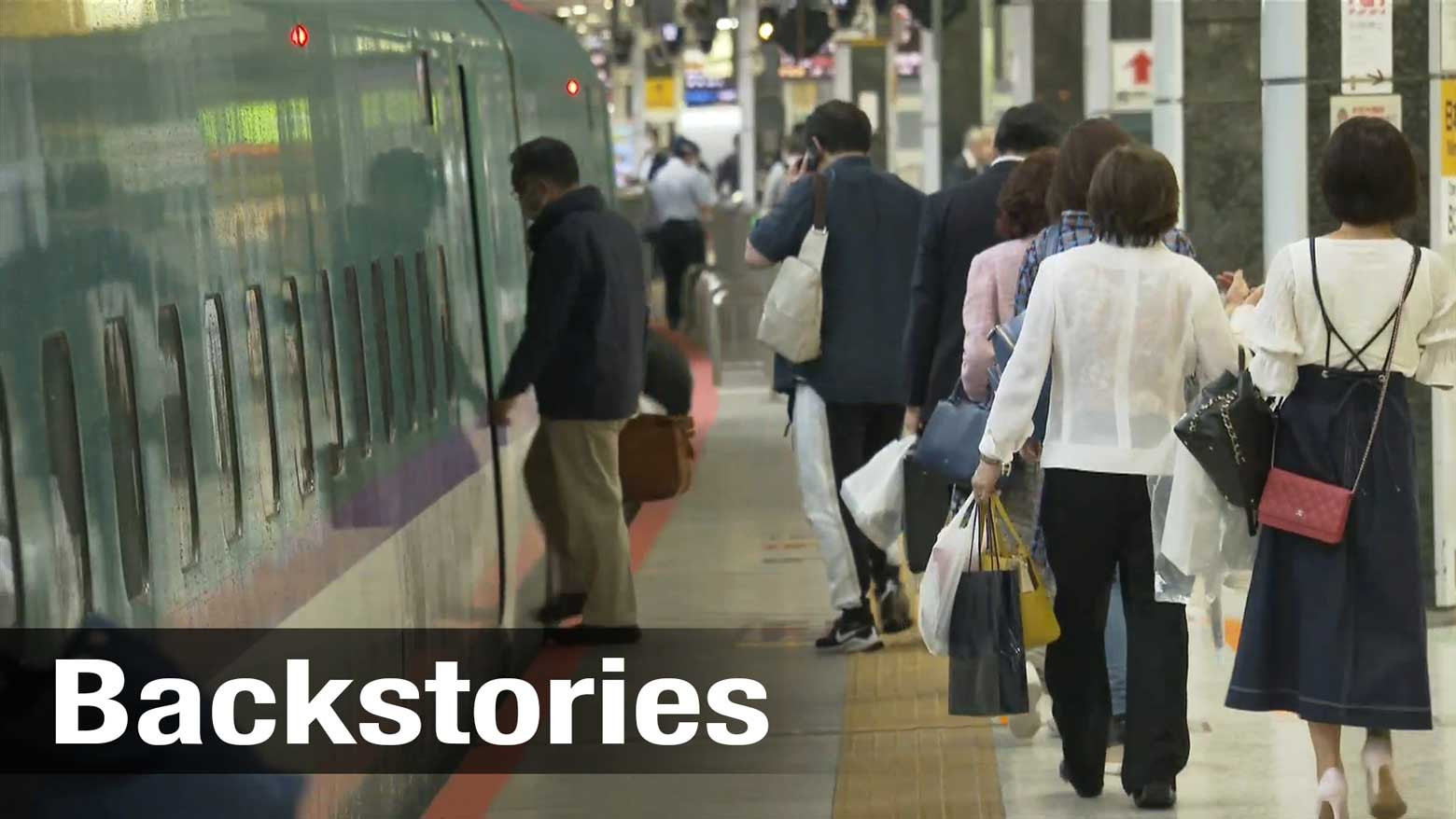Travel resumes
For some people, the end of travel restrictions meant the opportunity to see family members for the first time in months. A woman waited for her daughter and granddaughter in Haneda Airport's arrival lobby. They live in Hokkaido, so she has been unable to see them since March.
"I can't wait to see my granddaughter," she said. "I came here about an hour early, I was so excited."
It was a joyous scene when they were finally reunited.
"I'm just relieved to see them again," the woman said.
"I'm excited to play hide-and-seek with my grandmother," the girl said.
Tourist destinations were among the main beneficiaries of the resumption of travel. Ama-no-hashidate, on the coast of Kyoto Prefecture, is considered one of Japan's three most scenic sites. The park operator said this weekend, it received about 50% the number of visitors it usually gets at this time of year. The figure had been hovering between 10 and 20% in the month since the nationwide state of emergency had been lifted.

Businesses remain cautious
While they are happy to welcome back travelers, sightseeing companies remain wary of the coronavirus.
A firm operating day trips out of Tokyo's JR Shinjuku Station resumed tours this weekend for the first time in three months. On its first day back, it booked over 140 people on a range of tours, including a cherry-picking trip in Yamanashi Prefecture and a rafting expedition in Gunma Prefecture.
The company says it is sterilizing and ventilating all of its buses, and that it is keeping seats open between customers where possible. It also says that everyone has their temperatures taken and has to disinfect their hands before boarding.
"I'm glad we're finally able to start up again," says Ooyama Miyoko, who works as a tour guide for the company. "I want people to enjoy the trips as much as possible, while also being careful about preventing infection."

Hakone Kowakien Ten-yu, a Japanese-style hotel and hot spring resort in Hakone, saw visitors return to about 80% of their normal numbers over the weekend.
It expects more guests to come in the weeks ahead and has introduced a system to minimize the risk of infection. By scanning a QR code on their smartphones, guests can see how crowded the shared baths are before deciding to go.
"The system is convenient because I can use it on my smartphone," said a man who was visiting from Tokyo. "I can check it and go to the bath when it's less crowded."

Coronavirus looms
Mobile phone location data shows that the number of people traveling from Tokyo to other prefectures this weekend was up 11% compared to the previous weekend. The number of people traveling from other prefectures to Tokyo was up 14%.
However, the coronavirus is a lingering risk for all travelers. 56 new cases were confirmed across the country on Sunday, including 35 in Tokyo. Even as social and economic restrictions are gradually lifted, people will have to continue to acclimate to new standards of everyday life in order to prevent the spread of infection.

